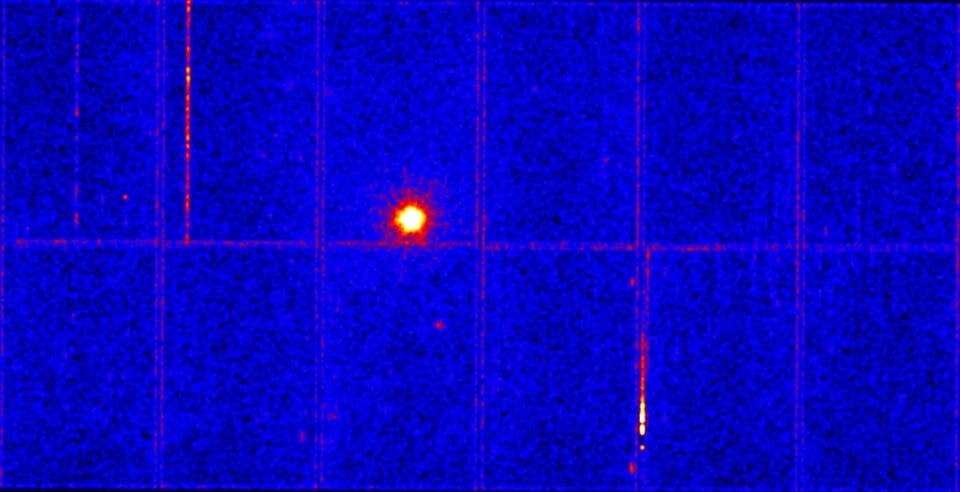Magnetars are some of the most ridiculous objects in the universe. Composed of the densest material possible spinning faster than your kitchen blender, they generate the absolute most powerful magnetic fields the cosmos has ever seen - and astronomers have recently spotted a newborn.
Neutron stars are made of the leftover cores of massive stars. In the final moments before the cataclysmic death of the parent star, billions upon billions of tons of plasma crush into the center at a healthy fraction of the speed of light. That intense crushing squeezes down the core to unimaginably high densities. Those densities - and the temperatures that go with them - are enough to shove electrons into protons, turning the core into a giant ball of neutrons.
And so, the death of a hydrogen-burning star gives rise to the birth of a neutron star, an object weighing a few times that of the sun crammed into a volume no bigger than your neighborhood. These beasts are composed of almost entirely all neutrons (hence the name) but contains enough leftover protons and electrons to generate ferocious magnetic fields.
And I mean ferocious. The magnetic fields found around the some neutron stars can top 100 million times the strength of the most powerful magnets made by humans. They are, indeed, the most powerful magnets in the known (and probably unknown) universe.
They are called the magnetars. And they are awesome.
Astronomers suspect that when neutron stars are first born, they are spinning rapidly enough to power up these impressive magnetic fields. But keeping up those feats of magnetic strength is no easy task, and the powerful fields serve only to slow down the magnetar, eventually turning it into just another boring old neutron star.
In comes a curious event known as *Swift J1818.0-1607*, a burst of gamma rays detected by NASA's Neil Gehrels Swift Observatory on March 2nd. Follow-up observations with the European Space Agency's XMM-Newton observatory and NASA's own NuSTAR telescope provided all the electromagnetic clues astronomers needed to piece together the origins of such a powerful burst.
Gamma rays are the highest-energy form of light, and producing a blast of them requires...a lot of high energy. After the initial flare detected by Swift, the follow-up observations in X-rays bands revealed that the culprit was a neutron star.
But the only neutron stars capable of expressing themselves in such extreme ways are that rare class known as the magnetars - and *Swift J1818.0-1607* is the latest entry into that elite community.
The coolest part is that this appears to be the youngest-ever magnetar ever detected (based on our limited understanding of how the spin of magnetars decreases as they age), with the astronomers guessing that it's practically a newborn at 240 years young.
If you ever want to visit, *Swift J1818.0-1607* is about 15,000 light-years away in the constellation Sagittarius. No need to rush - it's going to hang out for a long time, and is a bit feisty right now.
 Universe Today
Universe Today

